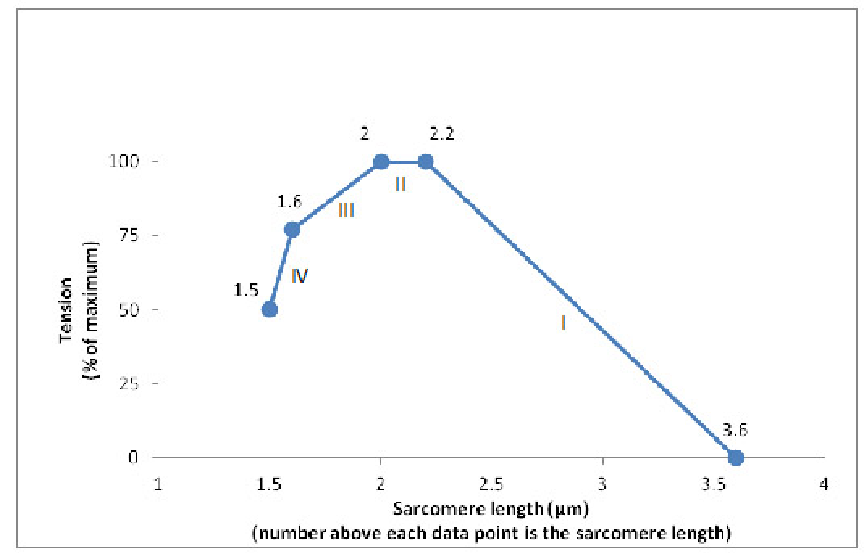In DNA replication,
A. a new noncoding strand is made for the coding strand.
B. a new coding strand is made for the noncoding strand.
C. Both of these occur.
D. None of these occur.
C. Both of these occur.
You might also like to view...
Histone modification occurs only during early development
A. true B. false
The sliding filament model for muscle contraction can be studied using an isolated skeletal muscle that is fixed at each end, while a machine records the tension that is generated when the muscle is stimulated to contract. In one particular muscle tested, the length of the thick filaments was 1.6 mm and the length of the thin filaments that project in from each Z line towards the center of the sarcomere was 1.0 mm. A summary of the results comparing sarcomere length to the degree of tension produced during contraction is shown below. What most likely explains the difference between segment II and segment III of the graph?

A. The muscle cells used up all the ATP by the end of segment II.
B. The length of the thin filaments is decreasing in segment III but not in segment II.
C. There is an increasing overlap of the free ends of the thin filaments in segment III but not in segment II.
D. The length of the thick filaments is decreasing in segment III but not in segment II.
E. The distance between the Z lines is constant in segment II but rapidly increasing in segment III.
F. Fewer myosin cross-bridges are forming in segment II than in segment III.
Clarify Question
· What is the key concept addressed by the question?
· What type of thinking is required?
Gather Content
· What do you know about the correlation between sarcomere length and tension? What other information is related to the question?
Choose Answer
· Given what you now know, what information is most likely to produce the correct answer?
Reflect on Process
· Did your problem-solving process lead you to the correct answer? If not, where did the process break down or lead you astray? How can you revise your approach to produce a more desirable result?
All cells in an embryo have the same genes, but they express different subsets of this genome. Selective gene expression is the basis of:
a. cleavage b. cell differentiation c. fertilization d. gamete formation e. organ maturation
Since the beginning of the twentieth century, the rate at which CO2, CH4, and nitrogen oxides have been released into the atmosphere has outpaced the rate at which they can be recycled. Thus these ________ ________ are accumulating in Earth's atmosphere and are correlated with an increase in the global annual-mean surface air temperature.
What will be an ideal response?